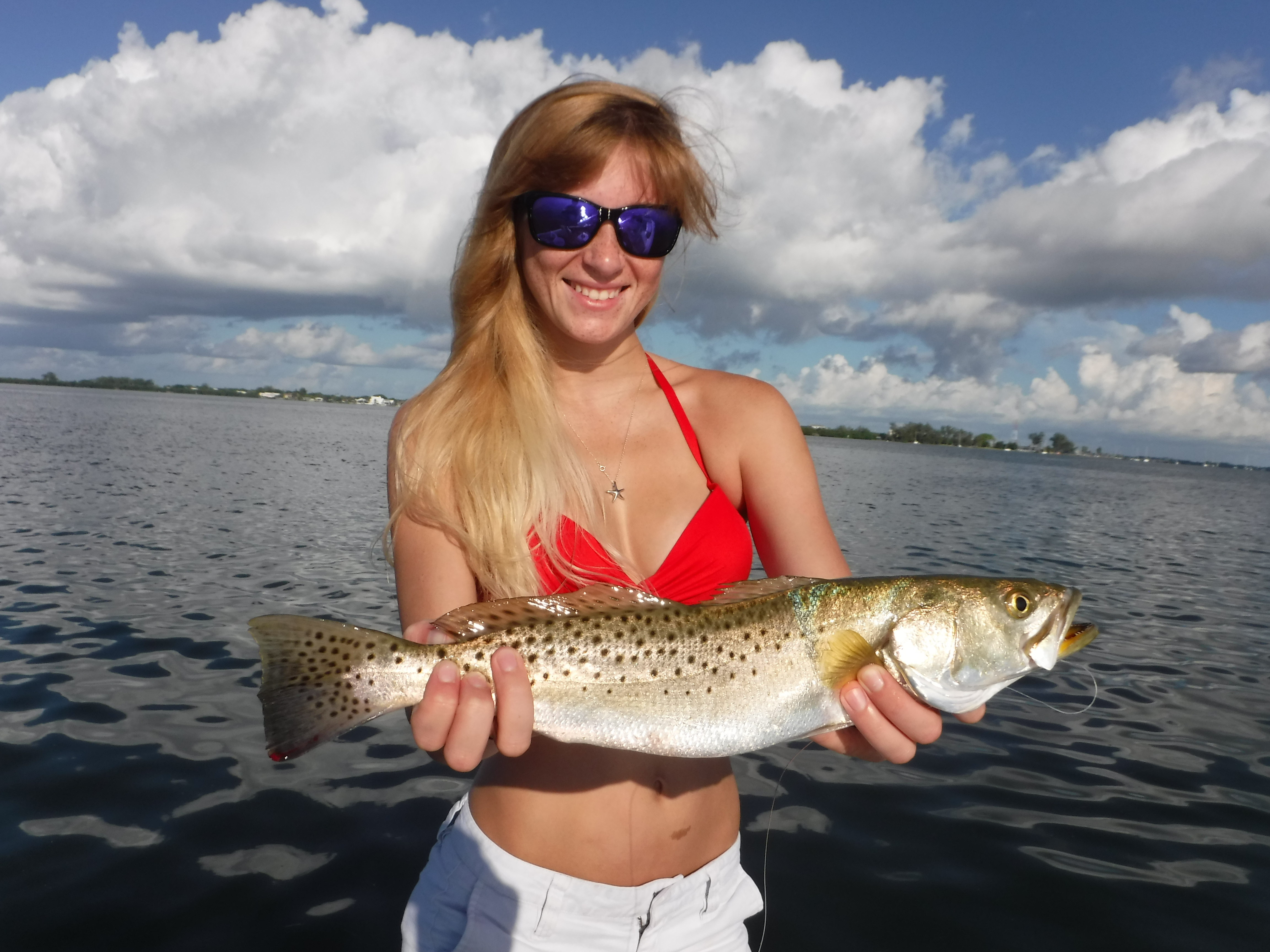My clients were experiencing hot action as we were anchored up-tide of a large grass flat in 6′ of water in Sarasota Bay. I had the fish chummed up with live pilchards and just about every bait that hit the water got inhaled. Spanish mackerel, trout, jacks, snapper and more kept the rods bent. Then, Chelsey hooked something that put up a more determined battle, staying deep and keeping the identity a mystery. After several moments the mystery was solved a large speckled trout came to the net.

As a guide and angler in Florida, I love this time of year! Despite the still quite warm weather, fall does arrive and the fish respond accordingly, however, the changes are subtle. The days are a bit shorter, the water temperature slowly drops, and the first mild cold fronts move through. Gamefish will begin to change habits and the successful angler will change tactics as well. It is time to move in and fish the shallow flats.
The shallow waters inshore will be very productive in early autumn as the water cools off. Speckled trout will move from deeper grass in 6′ to 10′ of water to the bars, potholes, and over grass flats in water between 2′ and 4′ deep. They will feed on the schools of bait fish that will concentrate in these locations. Snook will also begin their fall migration, moving from the passes to the same type on inshore spots.
Live bait is tough to beat when it comes to catching numbers of fish, and several techniques work well. The easiest is the time-proven live shrimp under a popping cork. The depth should be set so that the shrimp floats a few feet above the submerged grass. The rig is cast out, allowed to sit a few moments, then the rod tip is twitched sharply, resulting in a “pop”, which attracts the gamefish to the helpless shrimp.
Chumming with live pilchards or threadfin herring is extremely effective, especially for snook. It is more involved as a LOT of bait is required, along with a large recirculating livewell and a good pump. Potholes, bars, mangrove shorelines, and even docks are likely spots to try for snook, while lush grass flats with holes are prime spots for trout and other species. Anglers will anchor near the target and toss out a few baits to attract the snook and get them excited and in the mood to feed.
Artificial lures are effective as well and are a lot of fun to fish. They also allow anglers to cover a lot of water quickly. My two favorite lures are a soft plastic bait on a jig head and shallow diving plugs. Shad and shrimp tail baits in natural colors such as new penny, olive, white, and chartreuse work well on a 1/8 ounce jig head with a stout hook. Small plugs in olive and white that float on the surface and dive a couple of fish when retrieved are very productive.


